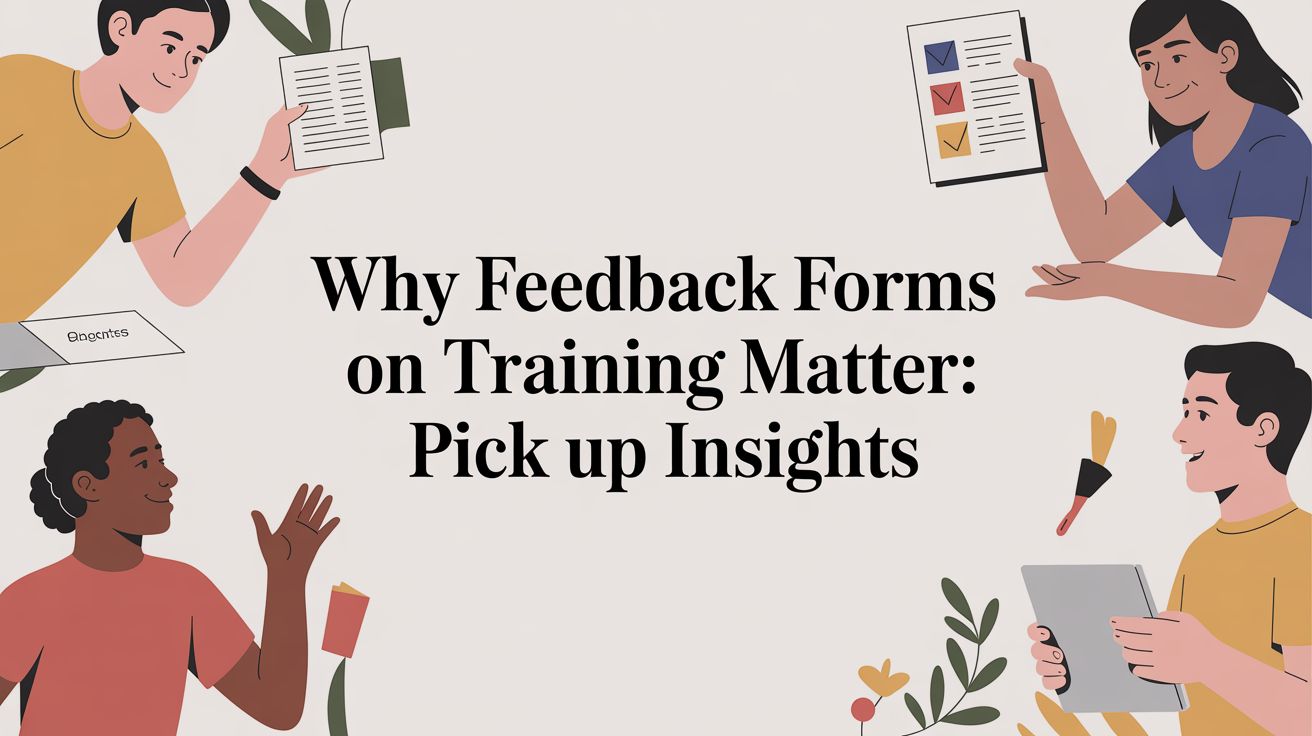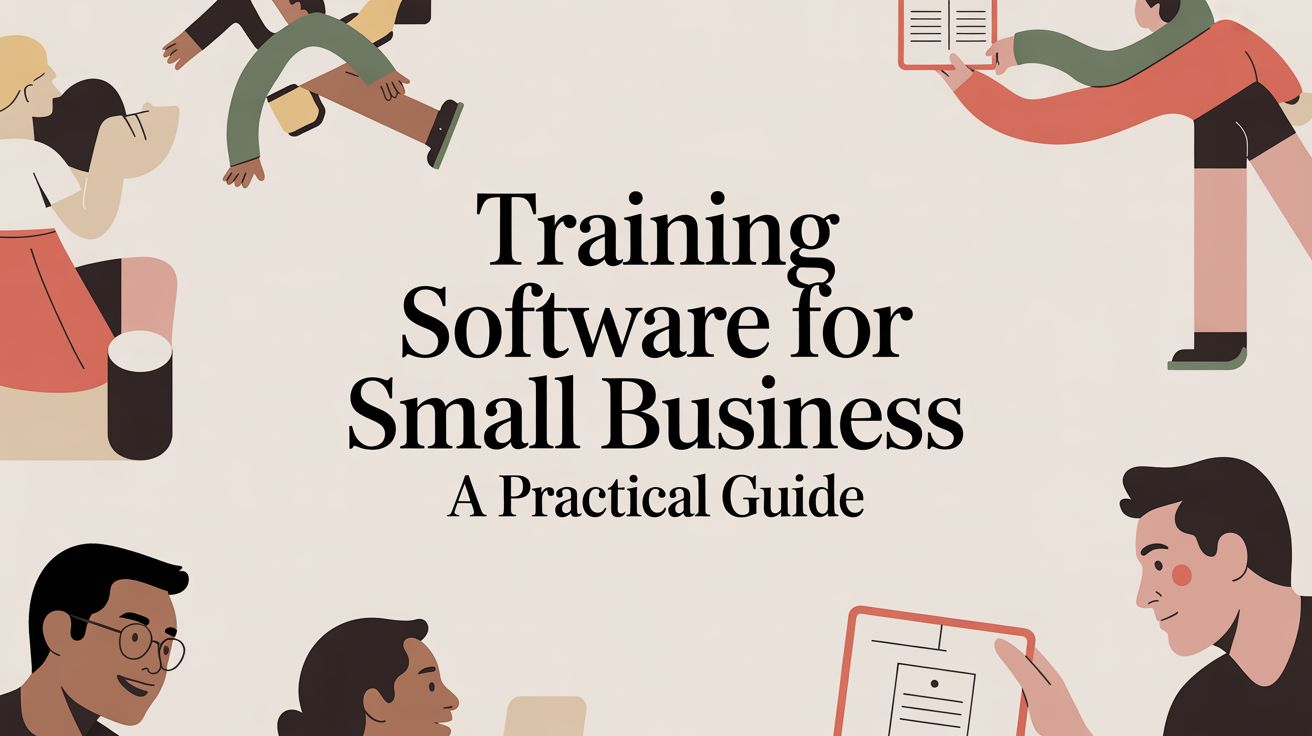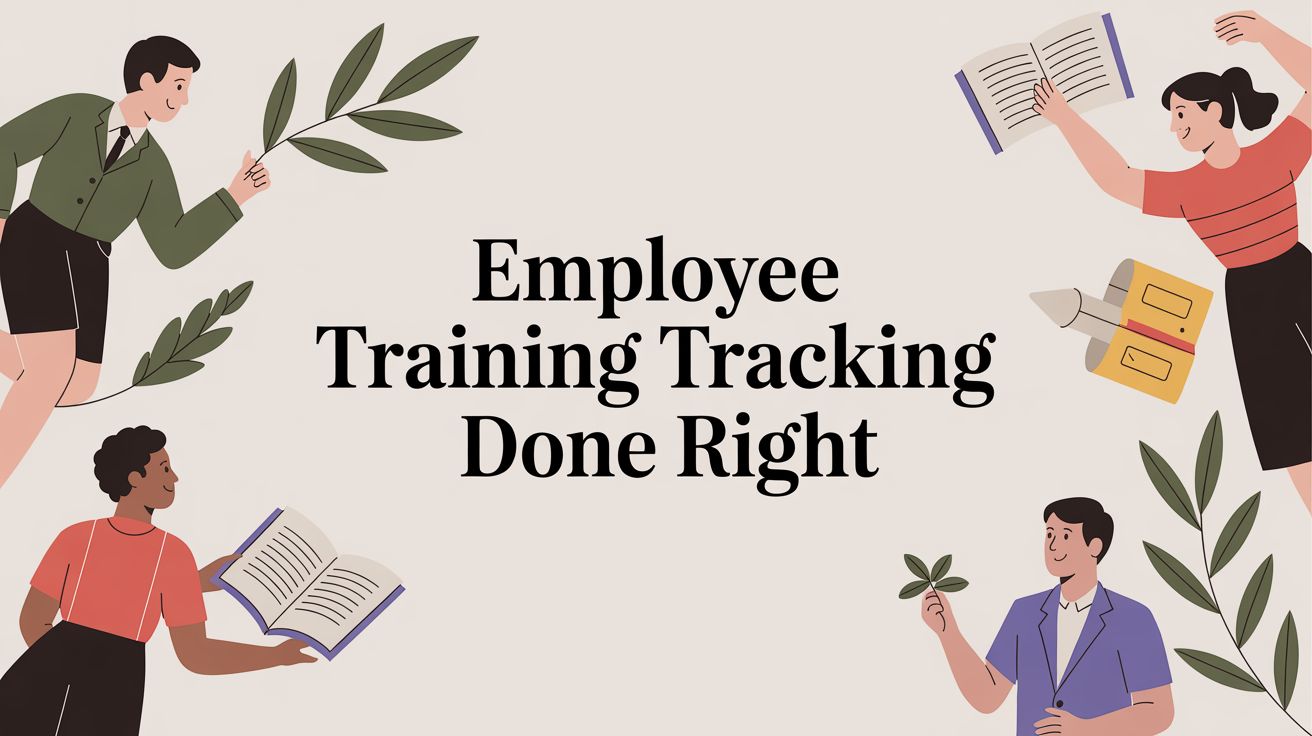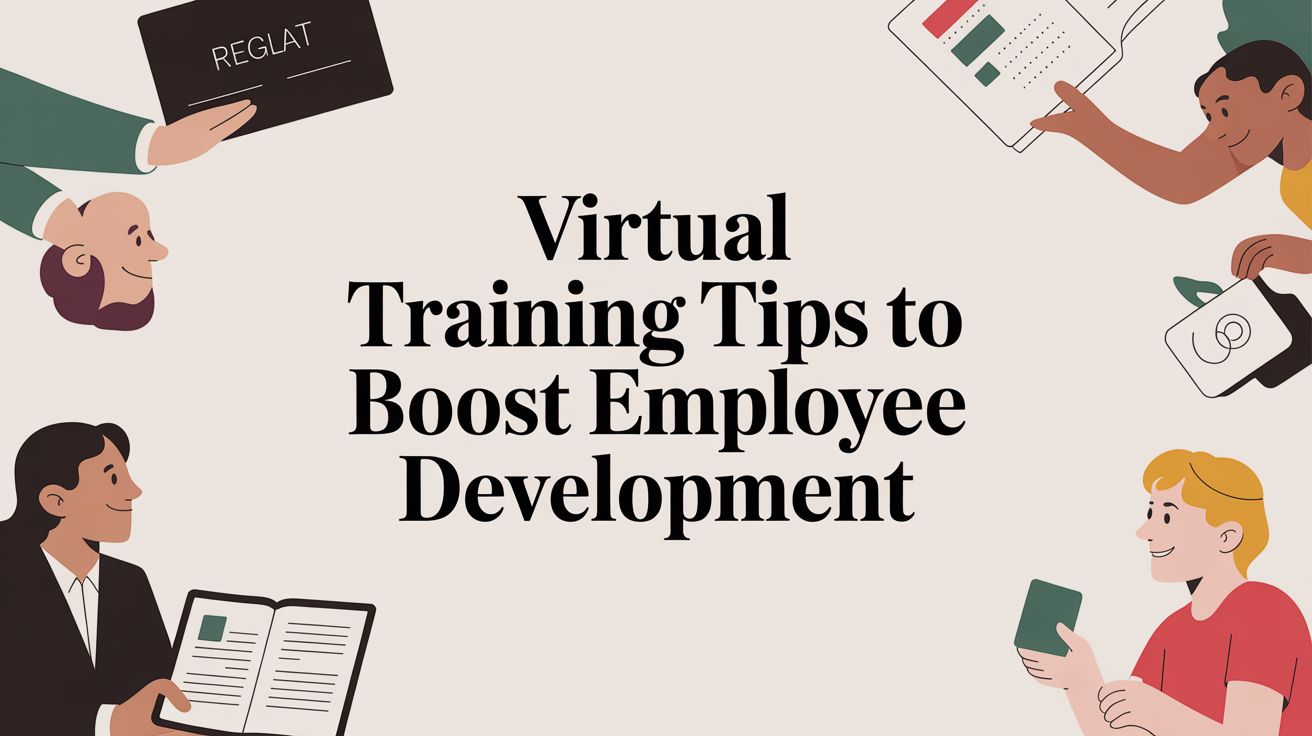Training Virtual Assistant: A Practical Guide
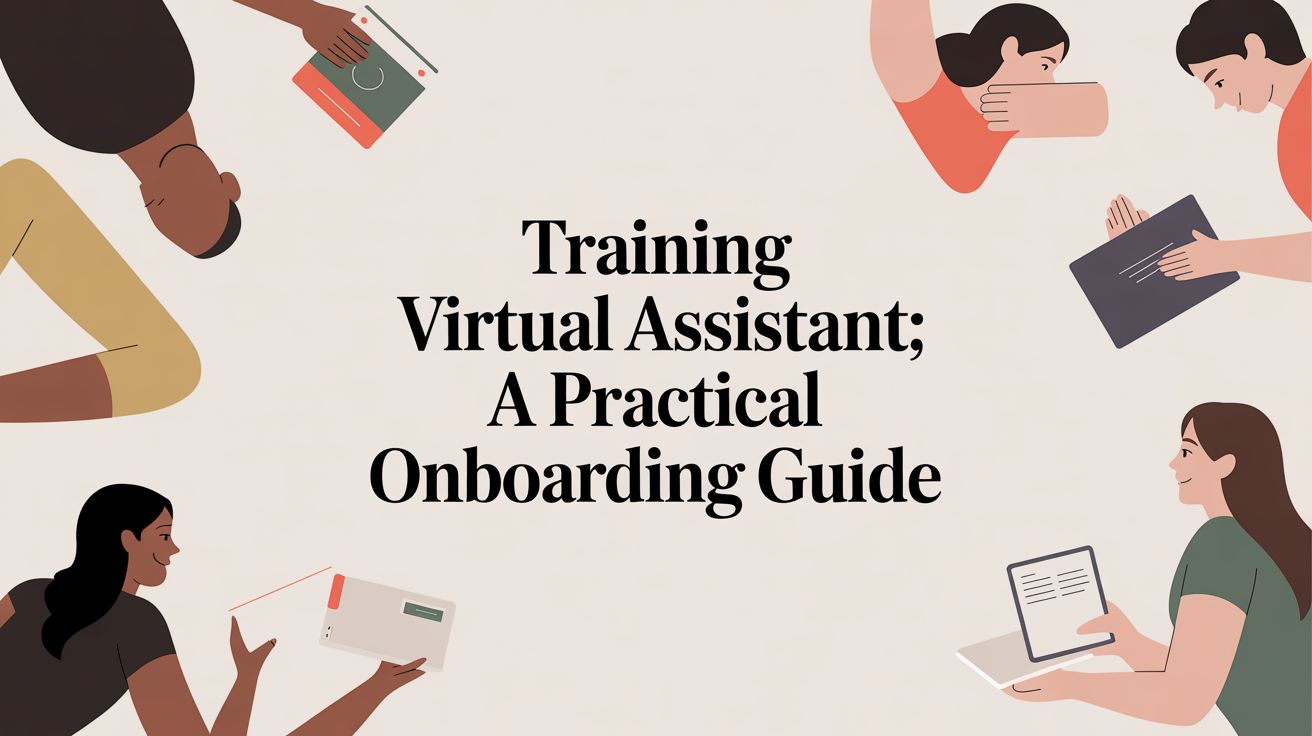
Delegating tasks is one thing, but the real magic happens when you properly train a virtual assistant. This is how you transform them from someone who just checks boxes into a true operational partner who can manage your training logistics with confidence and very little hand-holding.
The True ROI of Training a Virtual Assistant
Bringing on a VA isn't just about offloading work. A structured onboarding process is an investment that pays you back tenfold by freeing up your time, smoothing out your operations, and giving your instructors and students a much better experience. A well-trained VA, especially one armed with a purpose-built system for instructor-led training, becomes an absolute cornerstone of your business.
Before we get into the return on investment, it's worth looking at the wide range of tasks covered by typical virtual assistant services. Seeing the breadth of what they can do really drives home why specific, focused training is so critical to dial them into your business.
Unlocking Operational Efficiency
The biggest win here is getting your time back. Think about it. Instead of drowning in administrative details—scheduling courses, wrestling with registrations, sending out a million reminders—you can finally focus on the stuff that actually grows your business. This is exactly where a tool like Coursebricks shines.
For example, this is the kind of clean, straightforward scheduling interface your VA will live in.
Once you train them on this dashboard, they can own the entire lifecycle of a course, whether it's live or hybrid, without needing you to look over their shoulder.
The numbers don't lie, either. According to research from Time Etc, hiring a full-time virtual assistant can save a U.S. employer more than $11,000 a year. I've even seen reports of companies cutting operational costs by as much as 78% compared to hiring traditional staff.
To give you a clearer picture of what this training looks like in practice, here’s a breakdown of the key areas your VA will need to master.
Essential Training Areas for Your New VA
| Administrative Area | Key Responsibilities | Essential Software |
|---|---|---|
| Course Scheduling | Creating, updating, and managing the master course calendar. | Coursebricks, Google Calendar |
| Registration & Enrollment | Processing new sign-ups, managing waitlists, and handling payments. | Coursebricks, Stripe |
| Learner Communication | Sending reminders, answering FAQs, and distributing post-course materials. | Coursebricks, Email Client (Gmail/Outlook) |
| Instructor Coordination | Liaising with instructors on schedules, materials, and tech requirements. | Slack, Coursebricks, Trello |
| Reporting & Analytics | Pulling reports on attendance, revenue, and student feedback. | Coursebricks, Google Sheets |
This table shows how a platform like Coursebricks centralizes the most critical tasks, making the training process much more focused and effective.
My biggest piece of advice: Don't just show your VA what to do. You have to explain why it matters. When they understand how their work directly impacts the student experience and your bottom line, they stop just doing tasks and start taking ownership.
In the end, proper training for a virtual assistant isn't a cost. It’s a direct investment in your ability to scale. It’s how you build a solid operational backbone that can actually support your growth.
Laying the Groundwork for a Successful Partnership
Bringing a virtual assistant on board is more than just handing over a list of tasks. The real magic happens before they even start. If you want your new VA to hit the ground running and actually make your life easier, you need to spend some time setting them up for success. This initial prep work is all about creating crystal-clear instructions and giving them the right keys to the right doors.
This isn't just a nice-to-have; it's a strategic move in a booming industry. The global virtual assistant market is expected to skyrocket to USD 55.4 billion by 2035, and the trend is overwhelmingly towards long-term, dedicated partnerships. Investing a little time upfront builds a solid foundation for that kind of lasting relationship.
Map Out Your Processes with Simple SOPs
Before you can hand off a task, you have to know how it's done. I've found that the best way to do this is by creating simple Standard Operating Procedures (SOPs). Don't let the name scare you—these don't need to be 50-page binders. A quick checklist or a screen recording often works even better.
Pinpoint the tasks your VA will be doing over and over again. Things like:
- Setting Up a New Course: What are the exact clicks needed to get a new training session on the calendar?
- Enrolling a New Student: From the moment a student signs up, what's the process for getting them registered, taking payment, and sending that welcome email? You can dive deeper into managing instructor-led training in our other guide.
- Post-Course Follow-Up: When do you send certificates? How do you ask for feedback? Create a template and a timeline.
My Go-To Tip: I love using a tool like Loom for this. Just record your screen while you do a task one time, talking through the steps as you go. It's faster than writing everything down and way easier for your VA to follow.
Get Your Tech Access in Order
Once you have your processes documented, it's time to grant access. The key here is to give your VA just enough access to do their job effectively without giving away the keys to the entire kingdom.
This is where a dedicated training management system like Coursebricks really shines. You can create a specific user role for your VA, letting them manage course schedules and student registrations without ever seeing sensitive financial data or system-wide settings.
By giving them a clearly defined sandbox to play in, you empower them to work confidently and independently from day one.
Mastering the Art of Course Administration
This is the real turning point. It’s where your VA goes from simply being an assistant to becoming a true administrator who owns the day-to-day operations of your training business. The objective here is to get them so comfortable with the entire lifecycle of your instructor-led courses that they can manage everything with complete confidence.
Simply sharing your screen and clicking around isn't enough. Real learning happens with context. Instead of just showing them how to create a course in Coursebricks, give them a real-world task. For example, "Okay, we just signed a new corporate client. They need a private, two-day workshop for 15 people next month. Let's walk through setting that up from start to finish." This method immediately connects the 'how' with the 'why'.
From Course Creation to Completion
The most effective way to teach this is to follow the natural timeline of a course. Don't overwhelm them with everything at once. Break the process down into logical, bite-sized pieces that build on each other. A solid training virtual assistant program ensures they master one stage before moving on to the next.
Start with the fundamentals of setting up a new course. A dedicated training management system (TMS) like Coursebricks makes this incredibly intuitive because it's built for live and hybrid training, not for self-paced e-learning like a Learning Management System (LMS). If you're curious about the difference, our guide on the best LMS for corporate training offers some great insights into what makes those systems different.
Your VA should be able to confidently handle these core tasks:
- Creating New Course Schedules: Setting up dates, times, and locations (whether physical or virtual) and assigning the right instructor.
- Managing Registrations: Processing everything from simple individual sign-ups to complex group bookings, applying discount codes, and handling waitlists.
- Handling Payments: Making sure invoices are generated correctly, sent out promptly, and marked as paid inside the system.
Pro Tip: Don't be afraid to use role-playing. It's one of the best training tools you have. Throw them a few curveballs. "A client just called. They need to add three more people to their booking, but one person needs a separate invoice. How would you handle that in Coursebricks?" This kind of hands-on problem-solving is what builds real competence.
Mastering Day-Of and Post-Course Logistics
Once they've got the setup down, it's time to focus on the tasks that pop up right before, during, and after the course. This is often when things get a little chaotic, and a well-prepared VA is an absolute lifesaver.
Your training needs to cover how to manage last-minute hiccups, like an instructor calling in sick or a sudden venue change. Show them exactly how to use the system's communication tools to get clear, timely updates out to every registered attendee.
The job isn't over when the course ends, either. Make sure they are pros at the follow-up, including:
- Sending out post-course materials and feedback surveys.
- Generating and distributing certificates of completion.
- Properly archiving the course and running reports on key metrics like attendance and revenue.
By mastering this complete cycle, your VA can truly run the administrative side of your training delivery. This frees you up to stop working in your business and start working on it.
Building Your Communication and Support Playbook
Think of your virtual assistant as more than just an admin. For your attendees and instructors, they’re often the first human they'll interact with. This makes them a critical ambassador for your brand, so a consistent, professional communication style is absolutely essential.
The best way to nail this is by creating a clear playbook—a single source of truth for every common communication scenario. What are the questions you get over and over? Things like, "Where should I park?", "Can you resend my confirmation email?", or "Is lunch included?". Developing a set of email templates for these common queries empowers your VA to fire back quick, accurate, and on-brand responses every single time.
The real goal here is to shift from reactive support to a proactive, smooth experience for everyone. A great starting point is to map out the entire learner journey, from the moment they register to the post-course feedback survey. For some great ideas on making this journey truly memorable, check out our guide on creating engaging interactive training.
Setting Crystal-Clear Expectations
A huge piece of the puzzle is defining your expectations around response times. When an attendee emails, do they get a reply within two hours or twenty-four? What about a time-sensitive message from an instructor?
You need to document these service-level agreements (SLAs) clearly. It's also vital to establish a clear escalation path for trickier issues. If a corporate client has a billing question that your VA can't answer, they need to know exactly who to loop in and what information to provide.
Key Takeaway: Your communication playbook is more than a folder of templates. It's about defining your brand's voice and empowering your VA to confidently solve problems on their own, ensuring a consistent and supportive experience for every single person.
This kind of structured approach is quickly becoming the norm. The intelligent virtual assistant (IVA) market is forecast to jump from $27.9 billion in 2025 to an incredible $309.9 billion by 2033, with chatbots handling a huge chunk of customer service. You can read more about these virtual assistant market trends. This trend just underscores how important it is to have solid communication protocols in place, even when a human is behind the screen.
Finally, make sure your VA is trained to manage the whole communication loop—from sending pre-course information packets to collecting post-course surveys. This closes the loop and leaves every attendee with a professional, well-managed experience.
Beyond the Basics: Growing Your Partnership for the Long Haul
Think of the first week of training as just the beginning. The real magic happens when your initial training process evolves into a long-term partnership built on trust and continuous growth. This is where you’ll truly see a massive return on that initial time you invested.
The secret is to establish a solid feedback loop right away. For the first week or two, I recommend brief, daily check-ins. These quick chats are perfect for squashing any confusion early and building momentum. Once your VA hits their stride and feels more confident, you can ease back to a single, more strategic weekly meeting.
Expanding Responsibilities with Confidence
Once your VA has the core course administration tasks down cold, it’s time to start thinking bigger. Gradually introduce more complex responsibilities to show them you trust their judgment and to give them a real path for growth within your business.
Think about what comes next. What tasks can they take on that build directly on what they already know about your operations?
Here are a few ideas that have worked for me:
- Digging into Data: Teach them how to pull weekly attendance reports or create monthly revenue summaries right out of your training management system.
- Owning Instructor Logistics: Let them take over communications with instructors. This could mean sending out schedules, confirming details, or even processing their invoices.
- First-Line Support: Empower them to handle the simple, common attendee support questions that come in, only escalating the tricky ones to you.
My Advice: Always connect a new task to the bigger picture. Don't just say, "Start managing instructor invoices." Frame it like this: "When you take over instructor invoicing, you’ll be making sure our partners get paid on time, which keeps them happy and builds our reputation. That frees me up to focus on recruiting more great instructors."
This kind of progressive delegation keeps your VA challenged and engaged. They stop being just an assistant and start becoming a true operational partner—someone who's indispensable to your success.
If you're looking for more ways to get the most out of your remote team, our guide on succeeding with virtual training has some fantastic strategies to explore.
Common Questions About Training a Virtual Assistant
Bringing a virtual assistant on board for the first time? It's totally normal to have a few questions pop up. Getting ahead of these concerns is the best way to sidestep common pitfalls and start your partnership off on the right foot.
Let's walk through some of the things business owners ask most when they're ready to hand off their course administration.
How Long Does VA Training Take?
Honestly, it depends. But a good rule of thumb for getting a VA comfortable with your course administration is about one to two weeks.
Think of the first week as their deep dive into your essential tools. They should be getting the hang of your training management system and learning the ropes of how your team communicates.
The second week is where the rubber meets the road. This is when they start handling real-world tasks: processing registrations, answering attendee emails, and managing a course setup from A to Z. If you already have clear Standard Operating Procedures (SOPs) documented, you might even find they get up to speed faster.
What Are the Biggest Delegation Mistakes?
The number one mistake I see is being too vague. Handing over a task with an instruction like "manage the inbox" is a recipe for confusion.
Be crystal clear instead. Try something like this: "Check the support inbox twice a day. Use these templates for common questions, and escalate any billing issues to me within an hour." See the difference?
Another huge pitfall is micromanaging. You hired them for a reason, so trust them to do the work. Once you've provided the training, step back and give them the autonomy to own their role. Constantly checking in just erodes confidence and kills productivity. For a deeper dive into getting this right, check out this fantastic ultimate guide to virtual assistant training.
Key Insight: Don't dump everything on them at once. Trying to teach a VA your entire business in a single day is a surefire way to cause information overload. Break it down into bite-sized pieces. Master one process, like course scheduling, before you even think about moving on to the next.
How Can I Keep My Business Data Secure?
This is a big one, and it's a completely valid concern. The best place to start is with the principle of least privilege. In simple terms, only give your VA access to the specific systems and information they absolutely need to do their job—nothing more.
Additionally, always use a secure password manager like 1Password for sharing credentials. Sending sensitive logins over email or chat is a risk you just don't need to take.
Ready to explore Coursebricks?
Manage training programs, automate emails, and generate detailed reports — all in one place.




